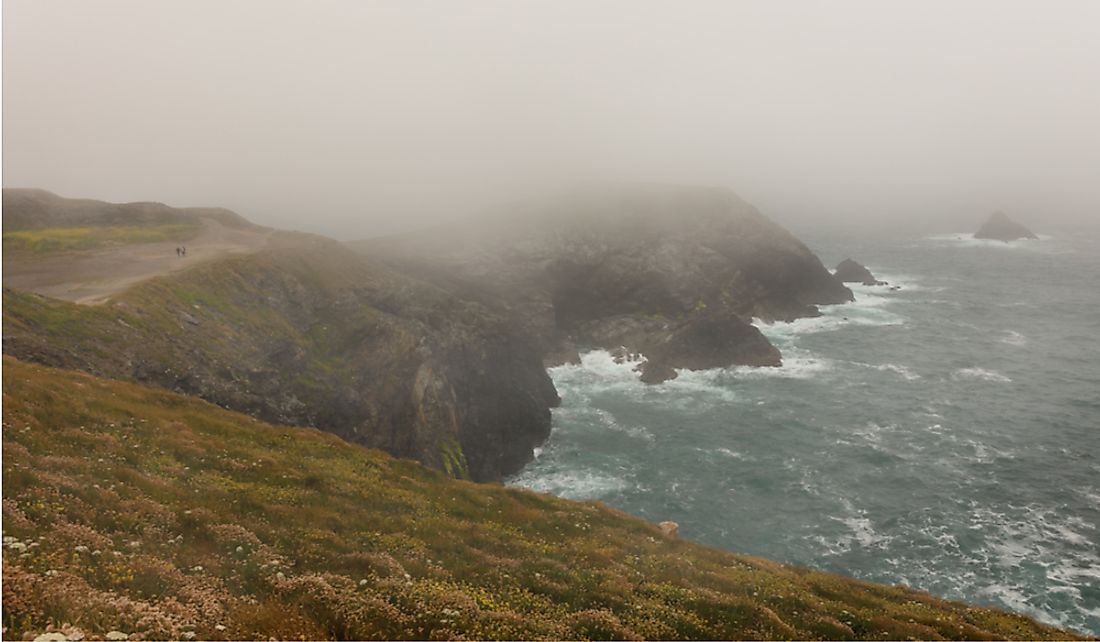How Does Coastal Fog Form?

Fog is an aerosol or "cloud" of tiny water droplets or ice crystals near ground-level. The low-lying aerosol, which can resemble a stratus cloud, is generally formed locally and is influenced by wind, topography, and nearby water bodies. When fog forms over a coastal region it is referred to as coastal fog. Grand Banks, Newfoundland is the foggiest place in the world experiencing thick coastal fog almost every day.
Formation
Coastal fog forms when moist, warm air passes over a cooler surface. When warm air blows across the surface of a body of water, it passes over cool air just above the surface of the water, and becomes condensed, forming small water particles that create fog. For example, in the United Kingdom, coastal fog occurs when warm air blows over the cold surface of the North Sea while moving towards the eastern coast. San Francisco is also known for having large amounts of fog from the cool ocean currents of the Pacific. The existing fog that was formed elsewhere but transferred to a coastal region by prevailing weather patterns is also referred to as coastal fog. Additionally, coastal fog is often formed in summer and spring when air temperatures begin warm, but the ocean or sea remains cold.
Coastal fog is influenced by the presence of microscopic-airborne salt crystals and sea spray in the atmosphere. All types of clouds require some microscopic nuclei upon which the vapor condenses. On the coast and above the sea, the most common type of particle present in the atmosphere are salt particles produced by breaking waves. Condensation on salt particles can occur even when the humidity is very low, and therefore coastal fog can form in relatively dry air, such as along the coast of California. Another source of condensation particle for coastal fog is kelp seaweed. Scientists have discovered that under intense sunlight the seaweed releases iodine, which becomes the nuclei for condensation.
Factors Affecting the Impact of Coastal Fog
The movement, location, and impact of coastal fog depends on various factors, including land temperature, wind direction, and strength. On the eastern coast of the United Kingdom, when the wind blows from the eastern side, fog will cover the coastal region rapidly. If the land is cooler in temperature, the fog lingers on the coast for a longer period of time, but if it is warmer, the coastal fog will dissipate quickly as the cold air becomes warmer.
Impacts of Coastal Fog
The sudden onset of coastal fog can be dangerous since it tends to reduce visibility. Depending on the water droplet concentration in the air, visibility can range from the appearance of haze to almost zero. The poor visibility resulting from coastal fog can create dangerous driving conditions on roads and highways, resulting in serious multi-vehicle collisions. The fog can also make it difficult for ships to dock in ports and for airplanes to take off and land. Additionally, coastal fog can impact productivity in the oil and shipping industries.











